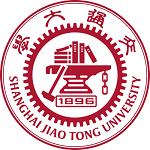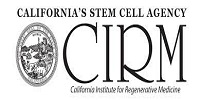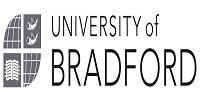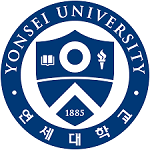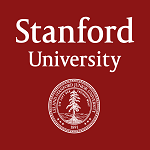Day 2 :
Keynote Forum
Aubrey De Grey
SENS Research Foundation, USA
Keynote: Cryopreservation of organs and organisms: Signs of a new era
Time : 09:00-09:25

Biography:
Abstract:
Huge numbers of people worldwide die while on waiting lists for organ transplantation, purely because no one sufficiently
immunocompatible dies sufficiently nearby. This tragedy would be substantially reduced if organs could be maintained in a viable state long enough to survive intercontinental travel, and it would be virtually eliminated if organs could be preserved indefinitely. Moreover, in the research arena cryopreservation of biological material has the potential to eliminate huge manpower costs in the maintenance of breeding populations of laboratory animals (such as fruit flies) and to enhance the quality of tissue slices. I will review a number of dramatic recent advances in the cryopreservation field that promise to deliver immense progress in all these areas.
Keynote Forum
Yaegaki K
Keynote: Transplantation of hepatocyte like cells derived from human tooth into the animals with liver conditions
Time : 09:25-09:50
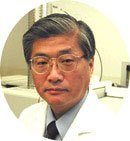
Biography:
Abstract:
Keynote Forum
Luiz C. Samapio
Texas Heart Institute, USA
Keynote: Maximizing cardiac repair: Should we focus on cells or matrix?
Time : 09:50-10:15
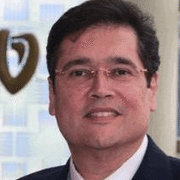
Biography:
Abstract:
- Biobanking | Cryopreservation| Vitrification | Biorepository & Biospecimen| Stemcell | Regenerative medicine| Tissue engineering | Rejuvenation
Location: Plaza I
Chair
Heiko Zimmermann
Fraunhofer Institute for Biomedical Engineering, Germany
Co-Chair
Ken yaegaki
Nippon Dental University School of Life Dentistry, Japan
Session Introduction
Aijun Wan
University of California, USA
Title: Engineering stem cells and biomaterials to treat birth defects before birth
Time : 14:20-14:40

Biography:
Abstract:
Elvira Famulari
Molecular Biotechnology Center, Italy
Title: Cell therapy for Crilger Najjar Type I syndrome
Time : 18:00-18:15
Biography:
Elvira Famulari is pursuing Ph.D in Molecular Biotechnology Center from University of Turin Italy.
Abstract:
Wael Abo Elkheir
Military Medical Academy, Egypt
Title: Regenerative effect of autologous mesenchymal stem cell injection on cartilage defects
Time : 17:40-18:00

Biography:
Abstract:
Hala Gabr
Cairo University, Egypt
Title: Role of bone-marrow derived stem cells in liver regeneration: a multicenter clinical trial
Time : 17:20-17:40

Biography:
Abstract:
Jin-Ye Wang
Shanghai Jiao Tong University, China
Title: Natural Polymer, Zein for Tissue Regeneration
Time : 17:00-17:20

Biography:
Abstract:
Shrikant L Kulkarni
Kulkarni Clinic, India
Title: Hydro-pressure therapy in chronic kidney diseases
Time : 16:40-17:00

Biography:
Abstract:
Lin-Hwa Wan
National Cheng Kung University, Taiwan
Title: Application of ultrasonography in the assessment of overhand movement
Time : 16:20-16:40

Biography:
Abstract:
Yong Jian Geng
University of Texas, USA
Title: Regeneration and repair of post-infarct cardiovascular tissues with rejuvenated stem cells
Time : 15:40-16:00

Biography:
Abstract:
Stephen S. Lin
California Institute for Regenerative Medicine, USA
Title: Initiatives to advance stem cell science and medicine at California’s $3 billion stem cell agency
Time : 15:20-15:40

Biography:
Abstract:
Seungil Ro
University of Nevada, USA
Title: Smooth Muscle Genome/Transcriptome Browser: Offering genome-wide references and expression profiles of transcripts expressed in intestinal primary cells and tissues
Time : 15:00-15:20

Biography:
Abstract:
Joanne Mullarkey
University of Bradford, UK
Title: Developing and setting up a tissue donation after death service in the UK: A research nurse’s personal perspective
Time : 10:15-10:35

Biography:
Abstract:
Vittorio Sebastiano
Stanford School of Medicine, USA
Title: Pluripotent Cells: A tool to model development and to deliver definitive cure for pediatric diseases
Biography:
Abstract:
Sita Somara
Wake Forest Institute for Regenerative Medicine, USA
Title: Clinical translation of tissue-engineered medical products (TEMP) - Journey from bench to bed-side
Time : 14:00-14:20

Biography:
Abstract:
Bo Feng
University of Hong Kong, China
Title: CRISPR/Cas9-Mediated knock-in of large DNA in human embryonic stem cells and somatic cells
Time : 12:35-12:55

Biography:
Abstract:
Pao Chi Liao
National Cheng Kung University, Taiwan
Title: Biomarker discovery using mass spectrometry-based proteomics/metabolomics and biospecimens
Time : 12:15-12:35

Biography:
Abstract:
Won-Gun Koh
Yonsei University, Korea
Title: Hydrogel micro pattern-incorporated nanofibers for biomedical application
Time : 11:55-12:15

Biography:
Abstract:
Nidhi Bhutani
Stanford school of medicine, USA
Title: ChallengesBiologics to enhance mesenchymal stem cell expansion and storage of developing a Biobank in Oxford, UK
Time : 11:35-11:55

Biography:
Abstract:
Jill Davies
Oxford University, UK
Title: Challenges of developing a biobank in Oxford, UK
Time : 10:35-10:55

Biography:
Abstract:
Jan Huebinger
Max-Planck Institute of Molecular Physiology, Germany
Title: Cryopreservation of living cells using electron microscopy fixation methods


